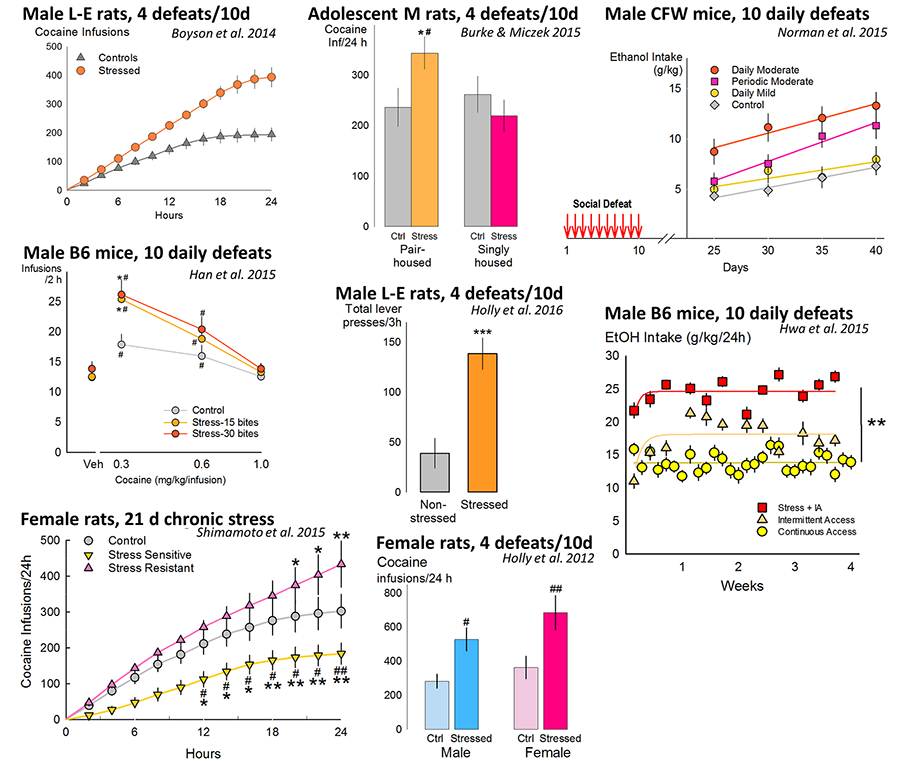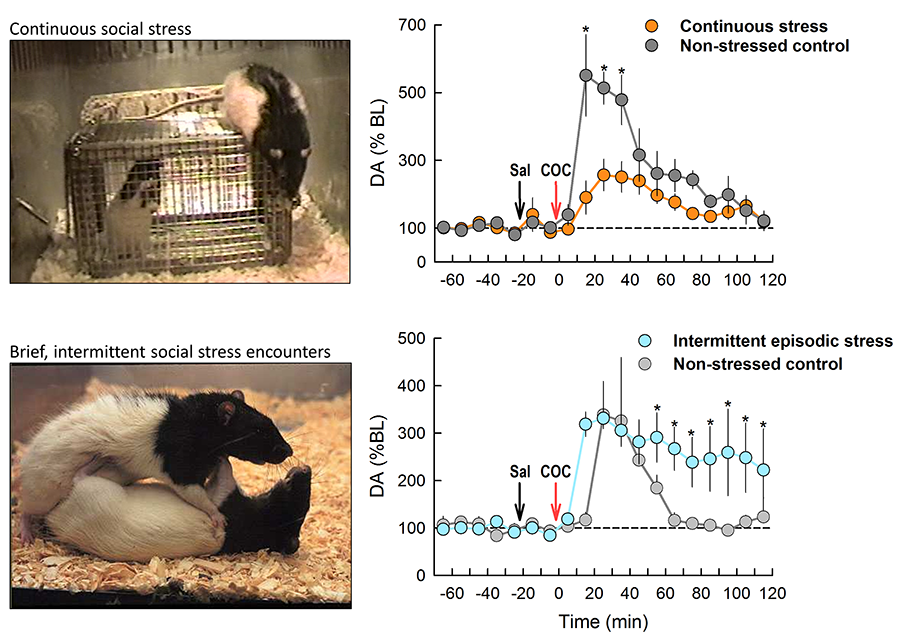Neurological Mechanisms of Aggression, Anxiety & Stress
The Miczek psychopharmacology laboratory studies brain mechanisms of aggression, anxiety, social stress, and abuse of alcohol and other drugs, integrating behavioral, physiological, and neuropharmacological research strategies.
Figure 1. Social defeat stress escalates self-administration of cocaine (left and center) and voluntary consumption of alcohol (right) in male, female, and adolescent rats and in B6 and CFW mice.
Corticotrophin Releasing Factor and Social Stress
Our ongoing projects focus on the role of corticotrophin releasing factor (CRF) in the relationship between social stress and cocaine self-administration. Microinjection studies (Holly et al, 2016) reveal that CRF receptor 1 (CRF-R1) in the posterior ventral tegmental area (pVTA) is a major contributor to excessive cocaine intake during a 24-hour unlimited access “binge” (Fig 2).
Figure 2. Role of VTA CRF during stress on later cocaine self-administration. Rats pretreated with aCSF vehicle microinjected before each social defeat (green) subsequently self-administered significantly more cocaine during a 24 h binge compared with aCSF-pretreated non-stressed controls (gray). This was prevented by pre-defeat microinjections of the CRF-R1 antagonist CP376395 into the posterior (gold) but not anterior (pink) VTA. Cumulative infusions in 2 h bins are shown on the left, with total infusions shown on the right.
Coping with Social Stress
We are also interested in sex differences in coping with brief episodic or continuous social stress and CRF modulation of dopamine in rodent models of cocaine abuse. Episodes of social stress sensitize males and females behaviorally and in accumbens dopamine. Learn more about this work in Shimamoto et al, 2011.
Figure 3. Dopamine in N accumbens shell during social stress in females. Ten days after the last confrontation in a 21-day stress protocol, the experimental rat was challenged with 10 mg/kg of cocaine, and levels of DA and 5-HT in the NAc were measured using in vivo microdialysis.
Role of NMDA and GABAA Receptors in Aggressive Behavior
Our group is also interested in the role NMDA and GABAA receptors play in the escalation of aggression by alcohol and benzodiazepines. Benzodiazepine-escalated aggression is being evaluated using benzodiazepine-insensitive GABAA α1, α2, or α3 receptor knock-in mutants and their wild-type C57BL/6J counterparts (Newman et al, 2016).



